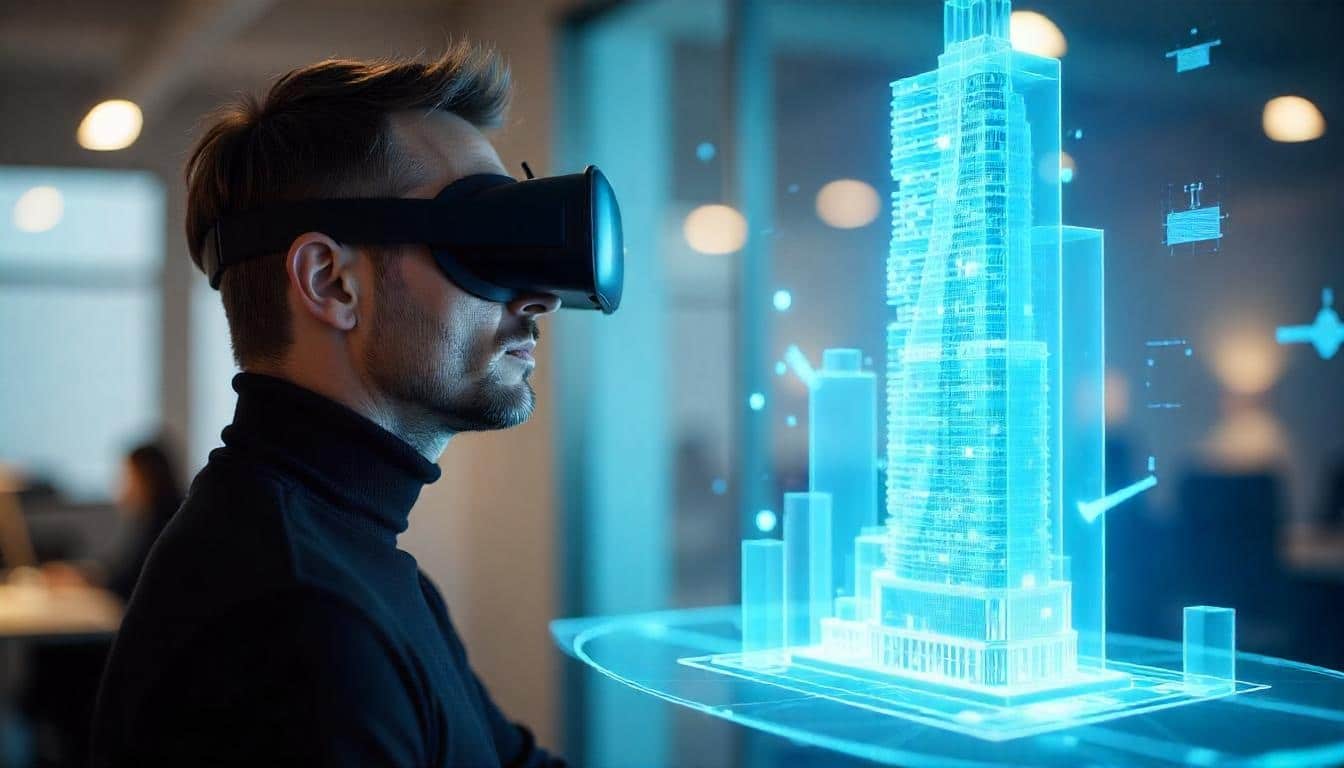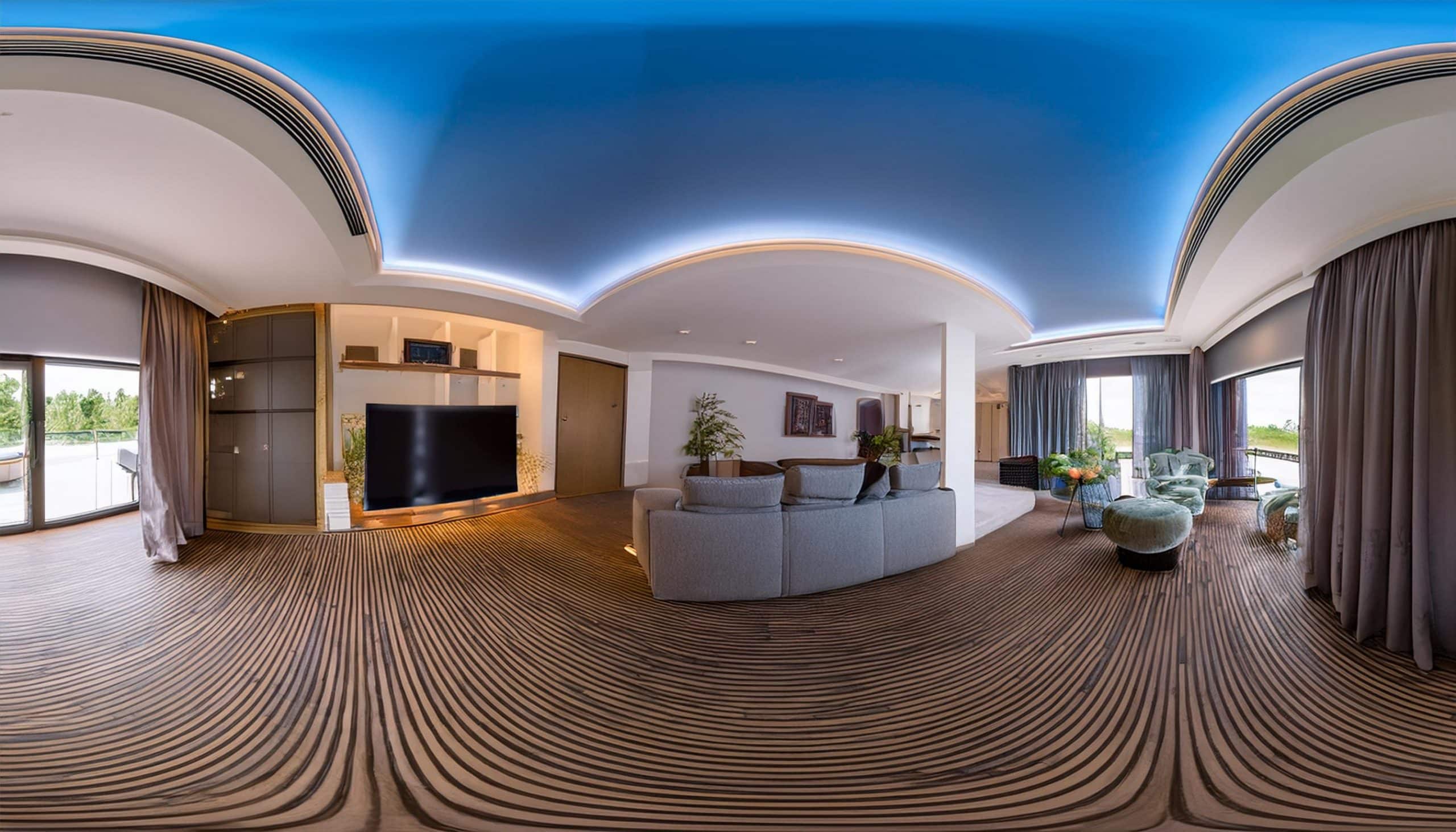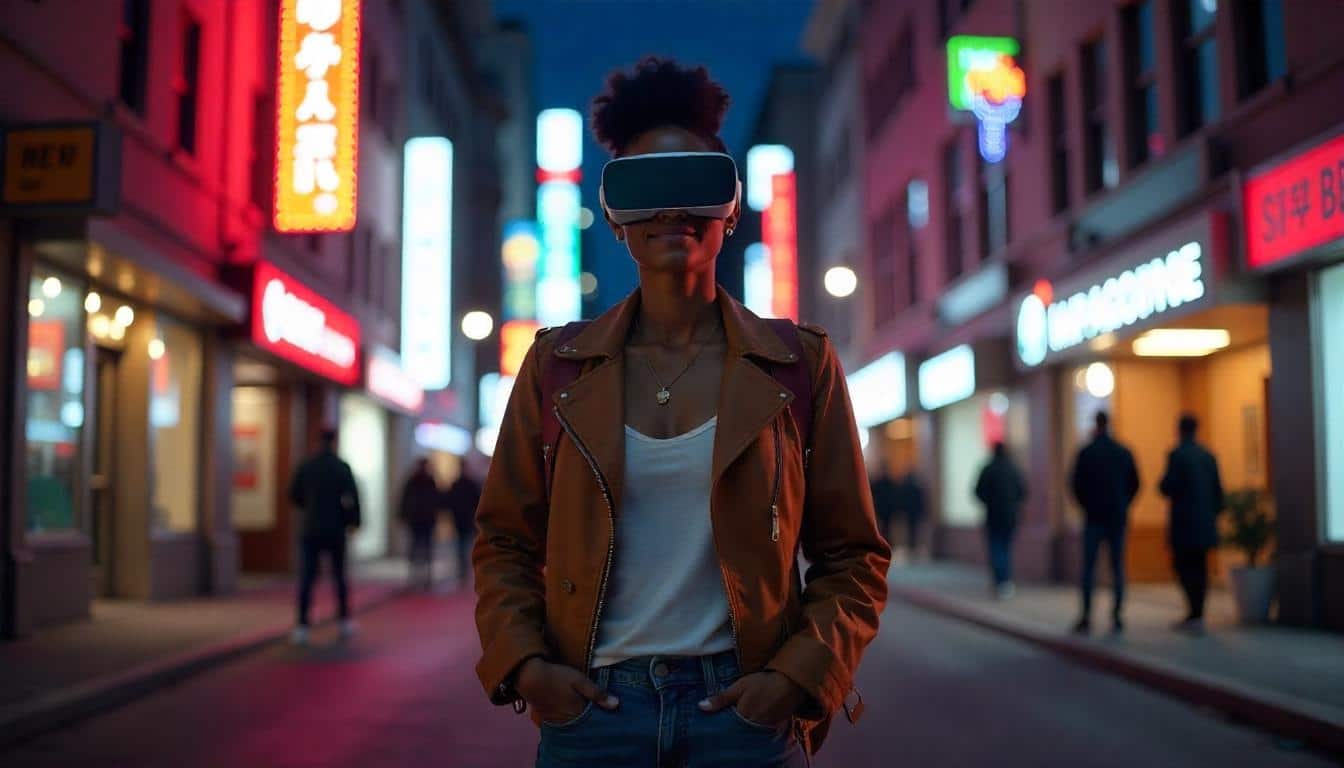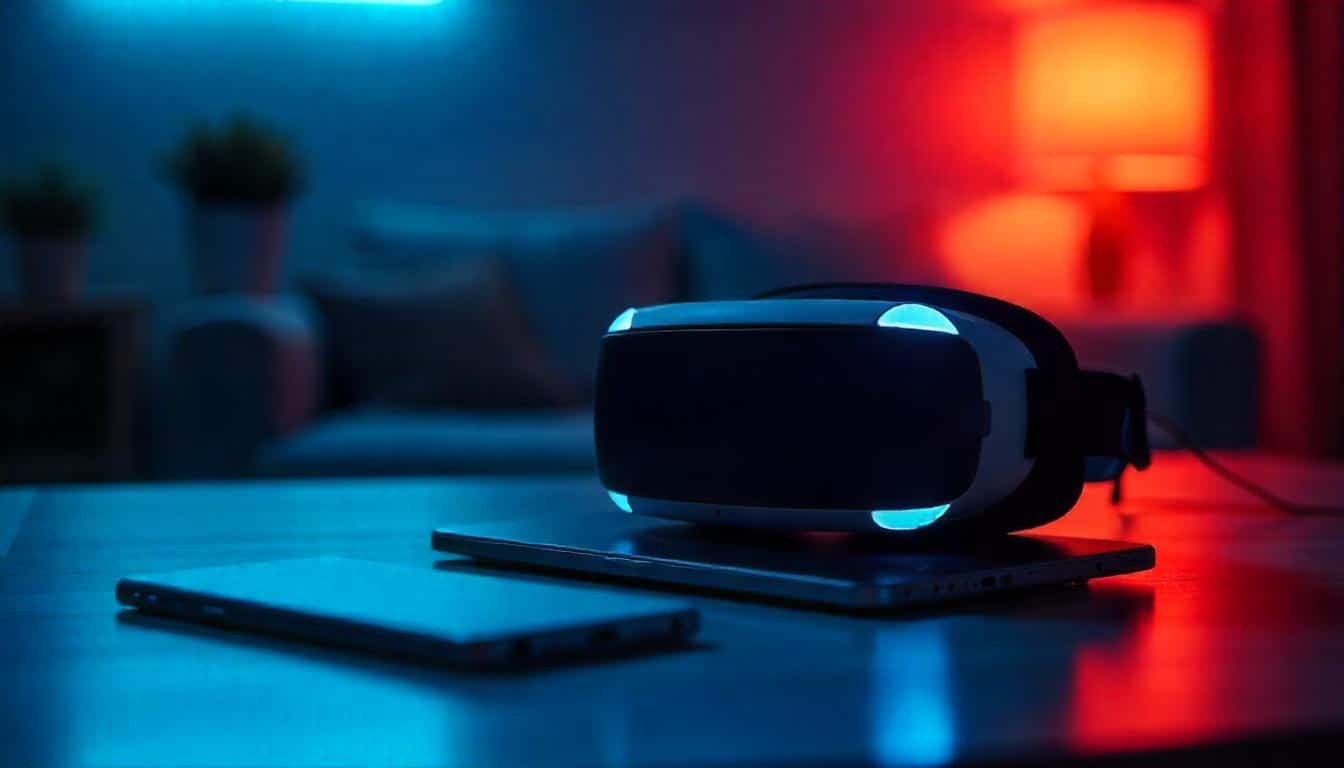Imagine giving your clients the ability to step inside a property without ever leaving their couch. Sounds like something out of a sci-fi movie, right? Well, it’s not! Thanks to interactive 360 virtual tours, real estate agents, architects, and interior designers can now offer immersive, engaging experiences that captivate potential buyers and clients.
Implementing interactive 360 virtual tours into your marketing strategy is no longer optional—it’s a game-changer. But how do you create a high-quality 360 virtual tour that not only looks stunning but also converts? Let’s break it down step by step.

What is an Interactive 360 Virtual Tour, and Why Does It Matter?
Before diving into the technical aspects, let’s define what interactive 360 virtual tours are. A 360 virtual tour is a fully immersive digital experience that allows users to explore spaces from multiple angles using their computer, smartphone, or VR headset.
Benefits of Interactive 360 Virtual Tours:
- Boost Engagement: Studies show that properties with virtual tours receive 40% more engagement than those without.
- Save Time and Effort: Clients can explore spaces without physical visits, speeding up decision-making.
- Enhance Marketing Strategies: High-quality tours increase conversions and give businesses a competitive edge.
Curious about how realtors are leveraging this technology? Check out our related article: Why 360 Virtual Tours Are an Essential Tool for Realtors.
Differences Between Interactive 360 Virtual Tours with Real Images and 3D Renderings
There are key differences between interactive 360 virtual tours created using real images and those generated with 3D renderings. While real-image-based tours capture actual spaces, they are limited by lighting conditions, physical staging, and existing architecture. In contrast, 3D-rendered virtual tours provide:
- Full creative freedom to visualize spaces before construction.
- Consistent lighting and weather conditions, ensuring optimal image quality.
- Customization options, allowing modifications in materials, furniture, and layouts to meet client needs.
For architects and real estate professionals, 3D-rendered VR360 tours eliminate constraints associated with traditional photography, providing an immersive experience that highlights design intent and future possibilities.
Step-by-Step Guide to Creating Interactive 360 Virtual Tours with 3D Renderings
Step 1 – Plan Your Tour Layout and Key Viewpoints
Before diving into 3D modeling, carefully plan your virtual tour layout. Consider:
- The main points of interest within the space.
- Natural flow from one room to another.
- Strategic camera placements for optimal perspectives.
A well-thought-out plan ensures that viewers get a comprehensive understanding of the space while maintaining an intuitive experience.
Step 2 – Create High-Quality 3D Models and Textures
Using 3D rendering software like Blender, 3ds Max, or Lumion, develop high-fidelity models with detailed textures. Key aspects to consider:
- Realistic lighting simulations to enhance depth.
- Accurate material reflections for photorealism.
- Furniture and decor to bring spaces to life.
At Xpress Rendering, we specialize in creating photorealistic 3D environments that elevate virtual tours beyond standard photography.
Step 3 – Render and Stitch the 360 Views Together
Once the 3D scene is built, the next step is rendering 360-degree panoramas. Advanced rendering engines like V-Ray or Unreal Engine can generate ultra-high-resolution images, which are then stitched together to create a seamless tour.
Step 4 – Integrate with Interactive Software
To transform your static panoramas into an interactive experience, use platforms like:
- Matterport
- Kuula
- 3DVista
- Roundme
These tools allow for hotspot creation, motion control, and VR compatibility, ensuring an engaging user experience.

The Key Elements of High-Quality Interactive 360 Virtual Tours
Creating a professional and engaging interactive 360 virtual tours involves more than just stitching panoramic images together. The following elements will determine the success of your VR360 presentation:
High-Quality 3D Renderings Over Photographed Images
While many Interactive 360 virtual tours rely on real-world photography, 3D-rendered tours offer several advantages:
- Full control over lighting, materials, and textures.
- The ability to showcase pre-construction projects.
- Customization options for client-specific needs.
Using high-resolution 3D rendering ensures a seamless and photorealistic experience. By utilizing Xpress Rendering’s VR360 services, you can create immersive tours that transport users into hyper-realistic environments.
User-Friendly Navigation and Interactive Features
A virtual tour is only as effective as its usability. To enhance user experience:
- Use hotspots: Allow users to navigate between different rooms smoothly.
- Include interactive elements: Provide clickable information on furniture, materials, and layouts.
- Ensure mobile compatibility: Optimize tours for smartphones and tablets.
Adding interactive design elements increases engagement and keeps users exploring longer, which is essential for marketing success.
Optimized Load Times and Smooth Transitions
Nobody likes waiting for a virtual tour to load. Long delays lead to frustration and high bounce rates. To optimize performance:
- Use lightweight yet high-quality rendering files.
- Implement progressive loading techniques.
- Optimize for WebGL and WebXR to ensure smooth performance across browsers.
By prioritizing speed and responsiveness, your 360 virtual tour will run seamlessly, retaining potential buyers and investors.
The Customization Benefits of 3D-Rendered Virtual Tours
One of the greatest advantages of 3D-rendered virtual tours over real-image-based tours is their customization potential. Unlike traditional photography, where elements of a space are fixed, interactive 360 virtual tours that are 3D-rendered allow for infinite modifications to better match client preferences and showcase different design possibilities.
Personalization for Different Buyer Preferences
- Material Swaps: Change flooring, countertops, cabinetry, and wall textures instantly.
- Furniture Customization: Offer multiple furnishing styles to appeal to different buyer demographics.
- Lighting Adjustments: Simulate different times of day or artificial lighting setups.
- Seasonal Variations: Display properties with summer greenery or winter landscapes to set the right mood.
Interactive Design Modifications
Interactive 360 virtual tours that are 3D-rendered empower clients and stakeholders to make real-time design choices. This is particularly beneficial for:
- Architects: Showcasing different facade designs, layouts, or materials before finalizing construction.
- Interior Designers: Allowing clients to experiment with various decor and color schemes.
- Real Estate Developers: Presenting different unit configurations within the same property.
Cost-Effective Marketing Strategy
Instead of creating multiple staged versions of a property or physically redesigning spaces, 3D virtual tours reduce marketing costs by offering a digital solution. Developers can:
- Showcase various upgrade options (premium flooring, high-end appliances, etc.).
- Offer virtual staging without requiring costly furniture rentals.
- Test different property layouts to identify the most appealing configuration.
Enhanced Buyer Confidence and Faster Decision Making
When buyers can visualize changes in real-time, they gain confidence in their purchase decisions. Whether it’s seeing how a different paint color transforms a room or assessing how furniture fits within a space, interactive 360 virtual tours streamline the decision-making process and reduce buyer hesitation.
For home developers, this means faster sales cycles and higher customer satisfaction rates.

Maximizing the Business Impact of 360 Virtual Tours
360 virtual tours are not just a visual enhancement—they provide tangible business benefits:
Real Estate & Home Developers
- Increases property visibility in listings.
- Boosts client confidence in remote property purchasing.
- Facilitates virtual open houses, saving time and resources.
Architects & Interior Designers
- Enhances client collaboration by providing immersive previews.
- Reduces miscommunication in design expectations.
- Streamlines approvals with visual clarity.
Construction & Site Planning
- Improves stakeholder engagement by providing virtual site walkthroughs.
- Enhances project transparency, reducing costly misinterpretations.
- Supports progress tracking with virtual documentation.
To learn why investing in 360 tours is crucial, check “Why Invest in 360-Degree Tours and How to Get Started“ from the National Association of Realtors.
How to Market Your Interactive 360 Virtual Tours for Maximum Visibility
-
Leverage Social Media for Increased Reach
- Share snippets or highlights of your 360 tour on platforms like Instagram, Facebook, and LinkedIn.
- Use targeted ads to reach potential buyers interested in virtual property tours.
-
Embed Tours on Your Website for Better Engagement
- Host the virtual tour directly on your property listings.
- Create a landing page dedicated to 360 virtual tours to attract more traffic.
-
Utilize Email Campaigns to Reach Potential Clients
- Send interactive virtual tours to your email subscribers.
- Include CTAs directing recipients to explore the tour further.

Frequently Asked Questions about Interactive 360 Virtual Tours
-
What is the difference between a 3D-rendered virtual tour and a photo-based tour?
A 3D-rendered tour offers complete customization, enhanced lighting, and flexibility, while a photo-based tour relies on existing real-world environments.
-
How long does it take to create a 360 virtual tour?
Timelines vary based on complexity, but a high-quality VR360 experience typically takes between 2-4 weeks from concept to completion.
-
Can 360 virtual tours be integrated with VR headsets?
Yes! VR360 tours are compatible with Oculus, HTC Vive, and Google Cardboard, providing a fully immersive experience.
Step into the Future of Visualization with Interactive 360 Virtual Tours
At Xpress Rendering, we specialize in high-quality 3D rendering, VR360 virtual tours, and video animations to help you showcase projects with stunning realism. Ready to create an immersive experience that captivates clients? Contact us today and our team will help you to WOW your clients!
Creating an interactive 360 virtual tour requires expertise in 3D rendering, immersive design, and user experience optimization. Whether you’re an architect, home developer, or real estate professional, leveraging VR360 technology can take your presentations to the next level.
We hope this guide has provided you with valuable insights into creating interactive 360 virtual tours that not only impress but also convert leads into clients. And hey, if you’ve made it this far, you’re officially a 360 virtual tour expert—congratulations! Now go forth and create tours so immersive, your clients might just try to walk through their screens!


